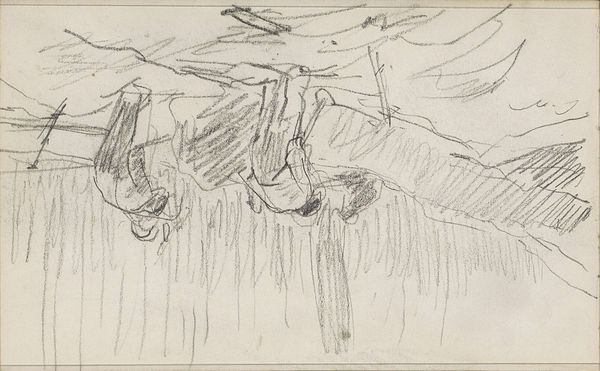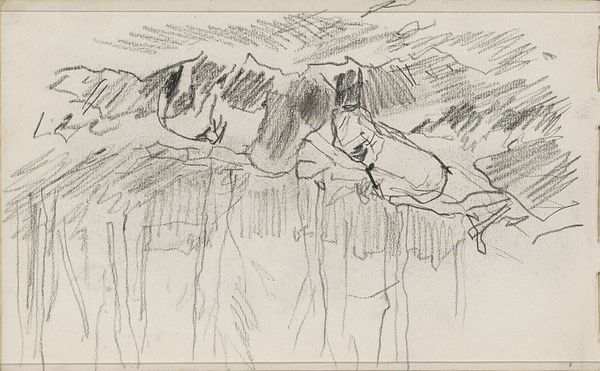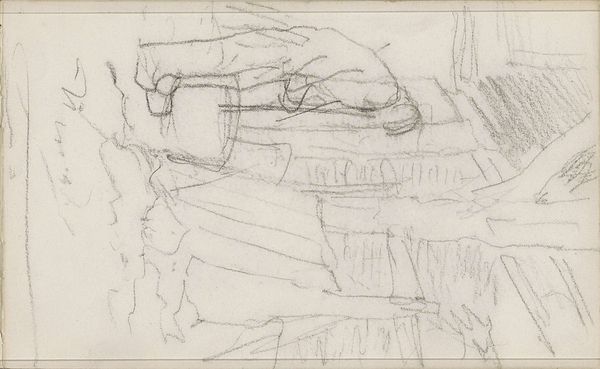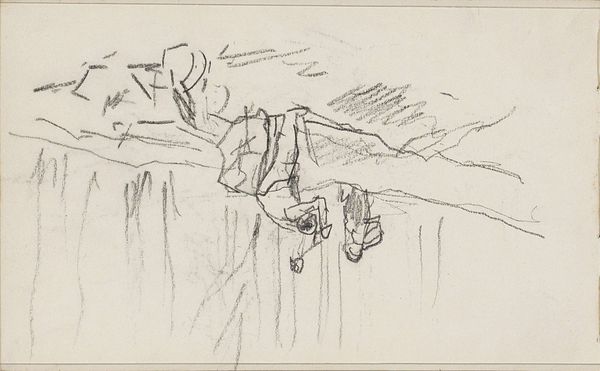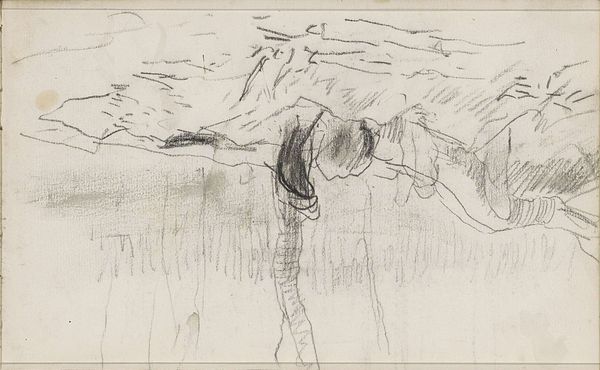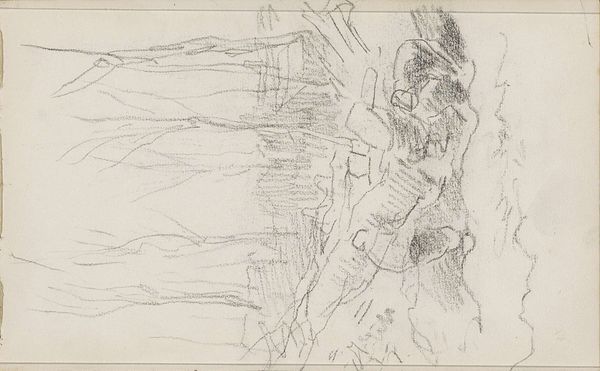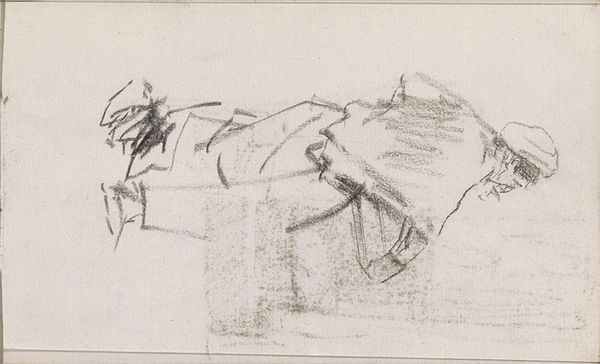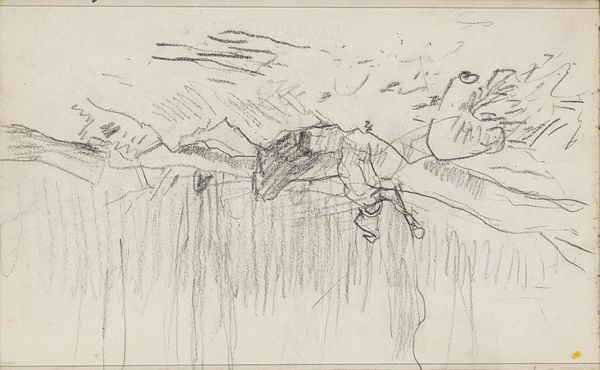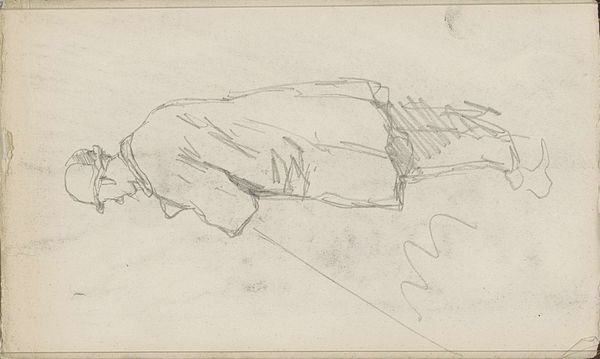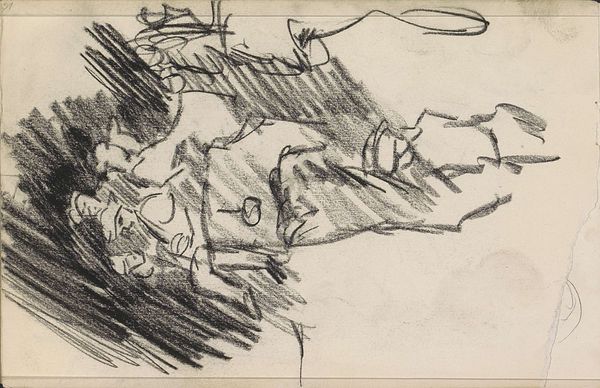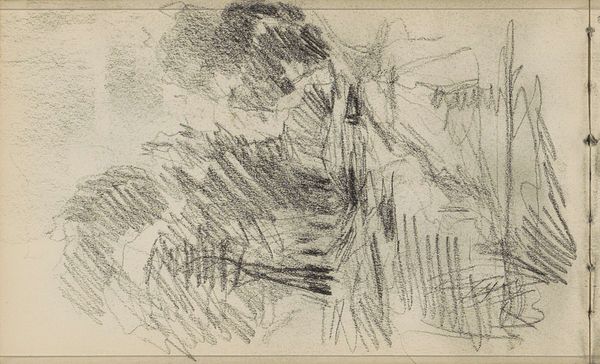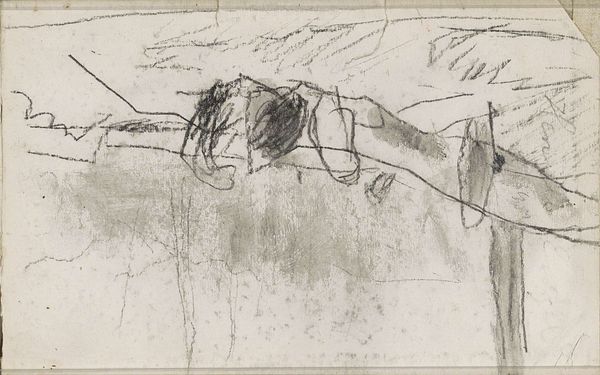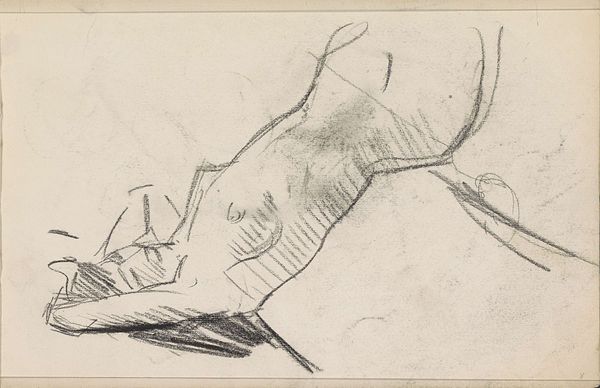
drawing, pencil, graphite
#
drawing
#
pencil sketch
#
landscape
#
figuration
#
pencil
#
line
#
graphite
#
sketchbook drawing
#
sketchbook art
#
realism
Copyright: Rijks Museum: Open Domain
Editor: So, this drawing by Anton Mauve, likely created between 1848 and 1888, is titled "Woodcutters at a Felled Tree." It’s a pencil sketch, quite spare in its lines. There's something somber about it, maybe the starkness of the scene. What do you make of it? Curator: It's interesting you picked up on that somber quality. Considering the social history of the Netherlands during Mauve's time, the image speaks volumes. The Industrial Revolution was in full swing, dramatically altering the landscape and livelihoods. We see these woodcutters not just as figures in nature, but as laborers impacted by vast economic shifts. Editor: So, you’re seeing the drawing as a kind of commentary on labor and industrialization? Curator: Precisely. Notice the seemingly effortless lines. They belie a deeper engagement with the changing role of rural workers. The sketch isn’t just a picturesque scene, but a reflection on the socio-economic realities of the time, made all the more powerful by its medium of humble graphite and paper. It presents laborers as being dispossessed of their natural environment for production. What impact does it create through such imagery? Editor: That gives me a whole new perspective. I was initially focused on the visual, but now I see it as connected to broader social issues. Does the fact it is in the Rijksmuseum change how it is received? Curator: Absolutely. The act of exhibiting this simple sketch elevates it to a cultural artifact worthy of consideration alongside grander, more explicitly political works. It influences what kind of social or political statements can be made through this platform. Its presence in a national museum also confers a certain validation of these men's labors, recognizing them, to some extent, as foundational to the nation. Editor: I had never thought about a sketch like this having so much to say about society. It highlights that art can tell important stories about work and landscape change. Curator: Precisely. It’s a powerful reminder that even seemingly simple sketches can reveal complex historical narratives, if we consider the right social and institutional contexts.
Comments
No comments
Be the first to comment and join the conversation on the ultimate creative platform.
